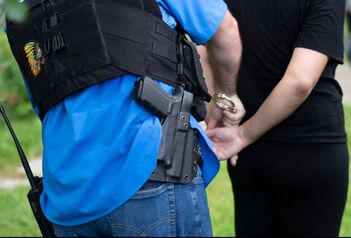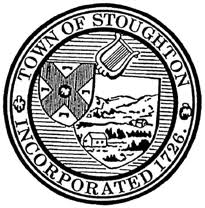 In yet another misguided decision by the social justice warriors, the City of New York has voted to eliminate qualified immunity for the city's police officers. In a moment when politicians should be making the job of law enforcement easier, society's do-gooders are going out of their way to make it more difficult. So what is qualified immunity? In a 1967 U.S. Supreme Court decision (Pierson v. Ray), qualified immunity established a legal principle whereby as long as a police officer made a good faith effort to do their job, he’d be protected from civil liability. I’m a visual learner, so allow me to illustrate with an example: A criminal robs a Dunkin' Donuts and runs out the front door just as a cop is walking in for his afternoon joe. Jimmy Dirtbag pushes the cop with the door as the employee is shouting to the cop she was just robbed at gunpoint. Doing his duty, the cop springs into action and takes the criminal to the ground, handcuffs him and takes him into police custody. Sounds good right? Well, during the struggle, Jimmy Dirtbag suffers an injury to his jaw that requires surgery. Cost of doing business for Jimmy Dirtbag? I would say so, however with qualified immunity gone, the civil court may disagree with me. You see, qualified immunity protects that cop as long as he made a good faith effort to subdue a fleeing felon using approved tactics that he was trained to use. He did not violate policy, violate the law or any other regulation to stop the criminal from getting away. Nevertheless, if the criminal FEELS his rights were violated, or suffered injuries that weren't absolutely necessary to stop his escape, he can sue the officer personally. So, that home he worked his entire life for? Gone. His new truck, cabin in the woods? Gone. All awarded to a criminal who never contributed anything to society, committed a violent crime and fought with a cop. With that being said, if the cop oversteps his bounds, violates his oath or violates someone's civil rights, there’s nothing qualified immunity can do to protect him. These violations include clear disregard for department policy or state/local law. Thus, opening that officer up to civil damage whether or not qualified immunity exists. The only reason I see for passing such an anti-cop, pro-criminal legislation is to discourage cops from taking action when necessary and allowing Jimmy Dirtbag to commit more crimes. But why stop at cops? Judges, members of congress and other government officials enjoy the protections of Absolute Immunity, which is a level higher than qualified immunity. Absolute immunity means even if they violate the law, violate policy etc. they can’t be sued civilly if they're in the performance of their duties. How many judges have released violent offenders who went and killed their victims? Shouldn't they be held to the same standard as cops? No, we shouldn’t ask those questions. So who does qualified immunity protect? Qualified immunity protects the good guys; the good cops who do everything they can to protect the public by catching bad guys. Otherwise, why would they do it?
0 Comments
 Stoughton Massachusetts is a town 17 miles south of Boston. With a population just over 26,000 Stoughton's property crime rate is less than Massachusetts average at 9.99 per 1000 residents (Massachusetts property crime rate is 11.8). Stoughton's violent crime is less than the Massachusetts average at 2.01 per 1000 residents (Massachusetts is 3.28). That means the likelihood of you becoming a victim of violent crime in Stoughton is 1 in 499. While all these numbers appear to be on the right side of the median, Stoughton residents should be more concerned about where it's headed. Are those numbers going down as compared to previous years, or are they going up? The answers to these important questions fall within the town’s annual report. When we compare the last couple of years of self reported criminal activity, it’s easy to deduce crime in Stoughton is on the rise. According to the town’s 2019 annual report (pages 55-57), the police department responded to a total of 25,144 calls for service. Many of those calls are routine and consume only a small percentage of the officers time. However, there are serious incidents which require a report to be generated including burglary's and violent assaults. The total number of offense reports investigated was 1,224 which was 357 more than 2018 (a 30% increase). As a result of officers investigations, Stoughton Officers either arrested or summoned the offender for criminal charge in 1,132 cases. This is an increase of about 13% as compared to 2018 (155 more arrests/summons). Add to that, the opioid epidemic continues to have a significant impact on the town. Stoughton accounted for 10% of Norfolk County’s total fatal overdoses. This is a staggering number considering there are 28 towns in Norfolk County. However, the number of actual overdoses has held steady and fatal overdoses have steadily decreased thanks to Stoughton Police Department's deployment of the drug NARCAN. “The total overdoses by year during the past four years consist of 65 for 2019 (3 were fatal), 64 (10 were fatal) in 2018, 50 (seven were fatal) in 2017 and 67 (12 were fatal) in 2016” (2019 annual report). So what, if anything does this mean for the Town of Stoughton? Simple answer: it depends. The Town of Stoughton has yet to publish their annual report for 2020 on their website. Only then when we’ll be able to determine whether Stoughton’s crime rate is on an upward swing or merely a blimp on the radar. Have you ever wondered if you have registered sex offenders living in your neighborhood? I think most people don’t really pay much mind unless "Creepy Jim" asks their kid if they want candy. Never a good thing. But there is an easy solution to information ignorance. Although the Jacob Watterling Act of 1994 established registry boards nationwide, it wasn’t until 1996 when it was amended by Megan's Law which required states to create searchable websites to alert the public when a registered sex offender lives or works in a particular area. Subsequently, The Adam Walsh Child Protection and Child Safety Act of 2006 established uniform requirements for sex offender registration throughout the country. In Massachusetts, we have the Sex Offender Registry Board who does a good job keeping track of these offenders. So, how do I find out who these people are? was your next question (I knew it). Click the button below to visit their website and find the level 2's and 3's in your area. Remember, Sex offender registration information can not be used to harass, discriminate or commit a crime against an offender. And there are stiff penalties for those who do this. For example, any person who misuses sex offender registration information obtained from the SORB website can be punished by two years in jail (M.G.L. c. 6, § 178N). So, I'd recommend not doing that. Although all offenders are required to register, only level 2 and level 3 offenders are publicly posted and available for view. There are thousands more level one sex offenders in Massachusetts who are protected from public knowledge because their offense was "minor". Remember, these so-called low level offenders have been charged AND convicted of their sex related crimes in a court of law. But all hope is not lost. If you believe you should have access to additional information (level 1 offenders) you can make a public records request to the Sex Offender Registry Board (click the button below). I hope this information is helpful. We strive to offer valuable information that helps protect and secure your lives. If Suburban can assist you in finding information or providing security services please click out CONTACT page and let us know!
|
AuthorThis Blog is written by Suburban's security experts, with contributions from industry experts. Nothing in these posts should be considered binding between the reader and Suburban's security team nor should it be considered legal advice. Just fun tips to help "Protect Your Most Valuable asset". Archives
December 2021
CategoriesGearBook |

 RSS Feed
RSS Feed
